4 Best Mutual Funds for Foreign Stocks
Tap into overseas markets with the wisdom of these four funds' managers.


Remember the lost decade for U.S. stocks? From 2000 through 2009, the total return including dividends of Standard & Poor’s 500-stock index was a negative 9.1%, or an annualized loss of 0.95%.
“Today, we’re about to see another lost decade,” reports Jeff DeMaso, research director for the Independent Adviser for Vanguard Investors. “But this time it’s overseas.”
Of course, 2009 proved a wonderful year to buy U.S. stocks because the S&P 500 hit bottom on March 9, 2009, and is now closing in on eight straight years of gains. DeMaso argues that similarly, this year may well prove to be a propitious time to buy foreign stocks. I couldn’t agree more.

Sign up for Kiplinger’s Free E-Newsletters
Profit and prosper with the best of expert advice on investing, taxes, retirement, personal finance and more - straight to your e-mail.
Profit and prosper with the best of expert advice - straight to your e-mail.
The divergence between foreign stocks and U.S. stocks has been stunning. Over the past 10 years, the S&P 500 has returned an annualized 7.2%. During that same stretch, the MSCI EAFE index of foreign stocks in developed countries has returned a meager 1.1% annualized. And the MSCI Emerging Markets index has done little better, returning an annualized 2.6%. Because stocks around the globe peaked in October 2007 before plunging into the worst bear market since the Great Depression, 10-year returns for foreign stocks are virtually certain to be underwater by this fall. (All returns in this article are through January 26.)
But expecting recent past performance to continue into the indefinite future is a classic investing mistake. I believe investors should always stay widely diversified, then put a little extra into parts of the market that are statistically cheap. Add a ton of patience and you’ll almost certainly wind up ahead over the long run.
Today foreign stocks are remarkably cheap relative to U.S. stocks. On earnings over the past 12 months, the S&P currently trades at a price-earnings ratio of 23—higher than at any previous time except during the tech bubble of the late 1990s. Meanwhile, the MSCI EAFE index trades at a price-earnings ratio of 20—pricey, but not ridiculous. Emerging markets are cheap at 14 times trailing earnings.
Doug Ramsey, chief investment officer of the Leuthold Group, an investment research firm, looks at an average of earnings over the past four years together with consensus analyst estimates for the coming year. So-called normalized earnings smooth out the peaks and valleys of the economic cycle and are widely considered to be a better gauge of market value than other methods of measuring earnings.
On Ramsey’s calculation of normalized earnings, U.S. stocks trade at a P/E of 22.5, foreign stocks in developed countries trade at a P/E of 16, and emerging markets stocks change hands at a P/E of 11.5.
Of course, overseas stocks aren’t cheap without reason. The European Union is threatened by a wave of nationalism—the same trend that swept Donald Trump into the White House. Japan’s economy faces huge demographic headwinds, mainly due to an aging population. And emerging markets have suffered from a lack of demand from the developed world.
But the stock market is a discounting mechanism, rapidly digesting all available relevant information. That means the bad news is already reflected in share prices, and if the news gets just a bit better than the market expects, foreign stocks will rally.
No one knows when foreign stocks will accelerate or when U.S. stocks will lose their mojo. But history shows that foreign and domestic stocks typically take turns leading each other, often for multiyear periods. Long-term returns for each are roughly the same. Emerging markets are already pulling ahead. Over the past 12 months, they have returned 33.0%—9.7 percentage points better than the S&P. Says Ramsey: “If you have a three- to five-year time horizon, you should do better overseas.”
What to buy? Below are some first-rate choices, starting with the lowest-risk options.
American Funds New Perspective F1 (NPFFX) is the cautious way to play foreign stocks. It invests roughly half of its assets in foreign stocks and half in U.S. stocks. Over the past 10 years, it has returned an annualized 6.3%—an average of 4.9 percentage points per year more than the MSCI All-Country World index. Annual expenses are 0.84%. Like all American funds, it is sold primarily through advisers, but individual investors can buy this and other American funds without paying a sales charge through the Fidelity and Schwab online brokerages.
Fidelity International Growth (FIGFX) manager Jed Weiss looks for unfairly tarnished stocks. Some are out of favor because of industry conditions; others are depressed because of company-specific crises. Over the past five years, the fund has returned an annualized 7.0%—an average of 1.1-percentage point better than the MSCI EAFE index. Weiss currently has 20% of assets in U.S. stocks. The fund is a member of the Kiplinger 25.
American Funds New World F1 (NWFFX) is a longtime favorite of mine. About half of its assets are in emerging markets stocks; the remainder is in multinational companies that do lots of business in emerging markets. The fund has consistently topped emerging markets stocks overall in bad markets and has bested foreign stocks in developed countries in good markets.
Vanguard Total International Stock ETF (VXUS) is a great choice in an index fund. For a mere 0.13% annually, it gives you the entire foreign world, including a 19% weighting in emerging markets. The fund owns some 6,000 stocks. If you don’t like the exchange-traded-fund wrapper, you can buy the fund under the symbol VGTSX for 0.18% annually or at the same price as the ETF through the admiral shares (VTIAX). The admiral shares require a $10,000 minimum investment.
Steve Goldberg is an investment adviser in the Washington, D.C., area.
Get Kiplinger Today newsletter — free
Profit and prosper with the best of Kiplinger's advice on investing, taxes, retirement, personal finance and much more. Delivered daily. Enter your email in the box and click Sign Me Up.

-
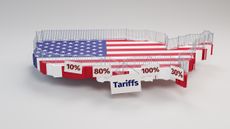 Trump's Sweeping New Tariffs Rattle Wall Street, Main Street
Trump's Sweeping New Tariffs Rattle Wall Street, Main StreetThe Kiplinger Letter Trump is promising that the short-term pain of steep new tariffs on imports will spark a manufacturing renaissance. But they pose major risks in the near term.
By Jim Patterson Published
-
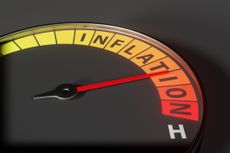 Why Does the Fed Prefer PCE Over CPI?
Why Does the Fed Prefer PCE Over CPI?Inflation has been top of mind for lots of folks in recent years. Most of Wall Street follows the CPI but the Fed favors the PCE. Here's why.
By Charles Lewis Sizemore, CFA Published
-
 Stock Market Today: Dow Drops Another 2,231 Points to Hit a Correction
Stock Market Today: Dow Drops Another 2,231 Points to Hit a CorrectionThe Nasdaq Composite, meanwhile, entered a new bear market with its latest slide.
By Karee Venema Published
-
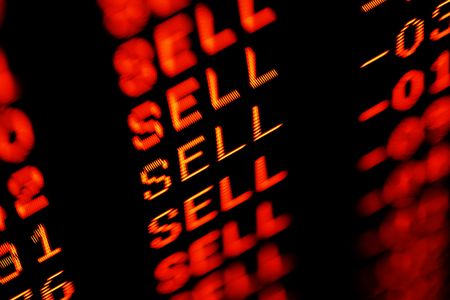 Stock Market Today: Dow Dives 1,679 Points on Trump Tariff Shock
Stock Market Today: Dow Dives 1,679 Points on Trump Tariff ShockU.S. stocks lost roughly $3.1 trillion in market cap on Thursday – the biggest one-day decline since the start of the COVID-19 pandemic in March 2020.
By Karee Venema Published
-
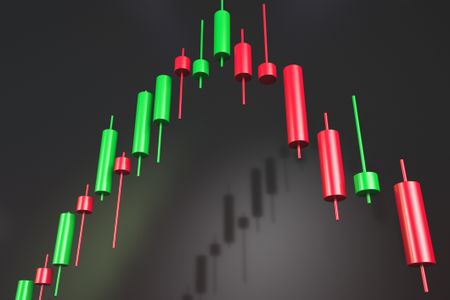 Stock Market Today: It's the Old Up-Down Again on Liberation Day
Stock Market Today: It's the Old Up-Down Again on Liberation DayMarkets look forward to what comes with the reordering of 80-year-old global trade relationships.
By David Dittman Published
-
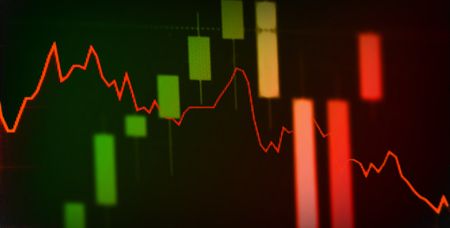 Stock Market Today: Stocks Are Mixed Before Liberation Day
Stock Market Today: Stocks Are Mixed Before Liberation DayMarkets are getting into the freewheeling rhythm of a second Trump administration.
By David Dittman Published
-
 Stock Market Today: Dow Rises 854 Points From Its Intraday Low
Stock Market Today: Dow Rises 854 Points From Its Intraday LowIf there's one thing markets hate, it's uncertainty. But uncertainty is all they're getting these days.
By David Dittman Published
-
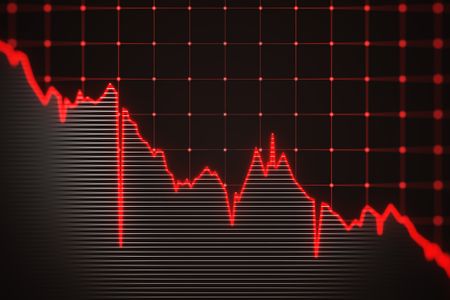 Stock Market Today: Dow Sinks 715 Points as Inflation Unrest Grows
Stock Market Today: Dow Sinks 715 Points as Inflation Unrest GrowsInflation worries are showing up in both hard and soft data.
By Karee Venema Published
-
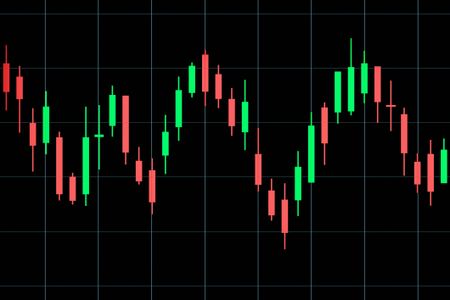 Stock Market Today: It's Going to Stay Choppy for Stocks
Stock Market Today: It's Going to Stay Choppy for StocksAuto-focus can show us a lot about uncertainty on the ground and in the stock market.
By David Dittman Published
-
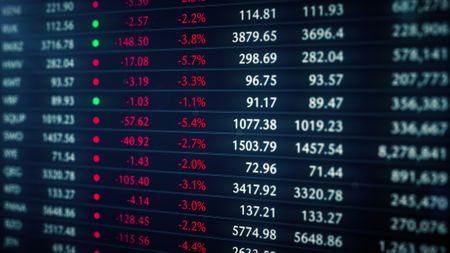 Stock Market Today: Auto Tariffs Send Stocks Lower
Stock Market Today: Auto Tariffs Send Stocks LowerThe main indexes snapped their win streaks after the White House confirmed President Trump will talk about auto tariffs after the close.
By Karee Venema Published